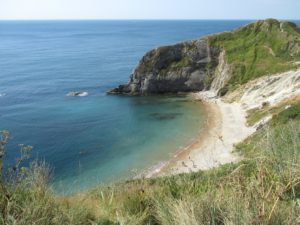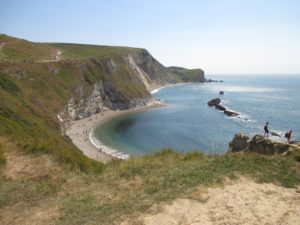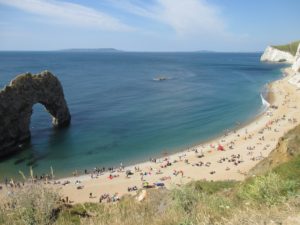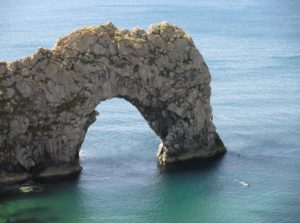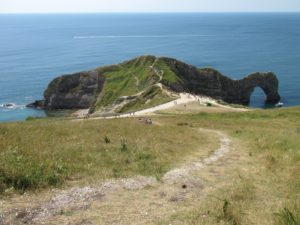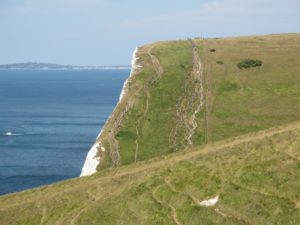Not really so much a stroll as a bimble in the car with a short walk at the end of it. Chap and I headed for the seaside yesterday, taking a long and slow route through Somerset and Dorset’s winding country lanes.
We stopped off at several places en route. First stop was the church of St Andrews in Yetminster. Here we admired the 15th-century painted decoration still surviving on the stonework and woodwork and a reminder of how our mostly now-plain parish churches would have looked in the past. There was a splendid brass monument to John Horsey (died 1531) and his wife on one wall, and another, stone this time, to Bridgett Minterne, who died in 1649. While we were there we were surprised by the church bells, which rang out ‘God Save the Queen’ – very unexpected. Apparently this happens every three hours to remind the villagers of Queen Victoria’s Jubilee in 1897. I wonder if it happens through the night? There are some fantastic gargoyles on the tower, and a beautiful golden weathercock, but my photos of these haven’t come out very well and so don’t do them justice.
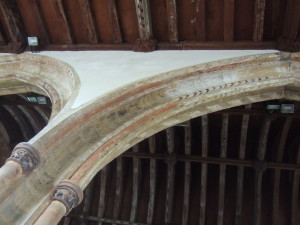
15th-century painted decoration at St Andrew’s, Yetminster.
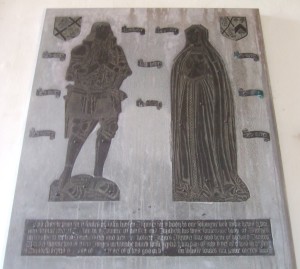
Brass monument to John Horsey (died 1531) and his wife, St Andrew’s, Yetminster.
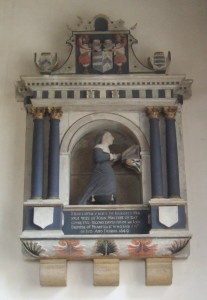
Monument to Bridgett Minterne (died 1649), St Andrew’s, Yetminster.
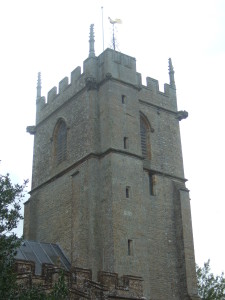
The tower with gargoyles and golden weathercock, St Andrew’s, Yetminster.
Next stop was the reservoir at Sutton Bingham. We went for a short walk along the edge of the reservoir through the wildflower hay meadow that is managed by Wessex Water, but as it had been given its annual cut not too long ago there wasn’t much to see. On the water there were mainly gulls and a few ducks, and a heron perched on the opposite shore. Sadly we didn’t see the osprey that are summer visitors here. A few dinghies and sailboats from the yacht club were pootling up and down the water, all very Swallows and Amazons.
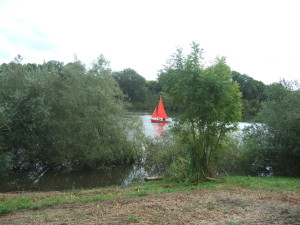
A Mirror dinghy on Sutton Bingham Reservoir.
Then down into deepest Dorset and the Marshwood Vale. We stopped at the village of Stoke Abbott, parking near a lovely lion’s-head fountain of spring water with a spring-fed stone trough for horses nearby, both under a mighty oak planted in 1901 to celebrate the accession of Edward VII to the throne following the death of Victoria. We wandered off to look at the church of St Mary the Virgin. There had been a wedding there recently, as the fresh and dried flower confetti lay on the path and the church was still adorned with the wedding flowers. The church is in such a pretty setting, and has a 12th-century font with wonderful carvings.
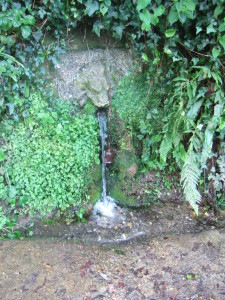
Lion-headed fountain for spring water at Stoke Abbott.
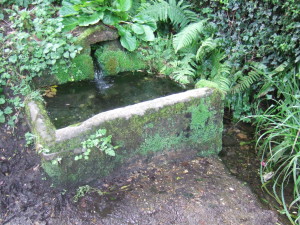
Spring-fed water trough for horses, Stoke Abbott.
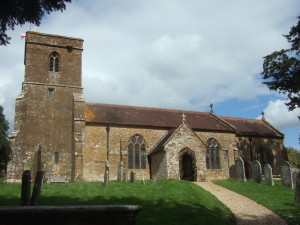
St Mary the Virgin, Stoke Abbott.
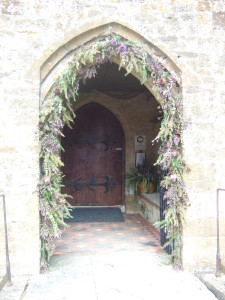
Wedding flowers at the porch, St Mary the Virgin, Stoke Abbott.
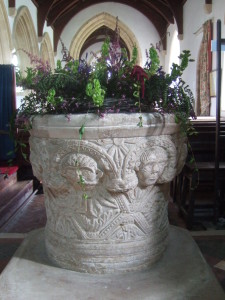
The 12th-century font, St Mary the Virgin, Stoke Abbott.
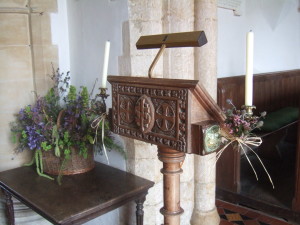
Wedding flowers and the simple lectern, St Mary the Virgin, Stoke Abbott. The flowers included agapanthus and Mollucella laevis (Bells of Ireland).

Notice in the porch, St Mary the Virgin, Stoke Abbott.
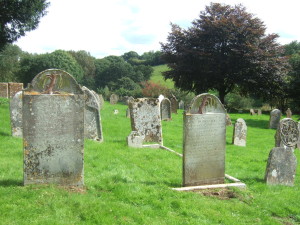
The sadly sheep-free graveyard, set in the most beautiful countryside, St Mary the Virgin, Stoke Abbott.
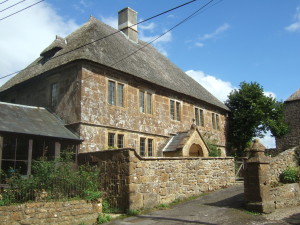
A lovely thatched house near the church in Stoke Abbott.
When we got back to the car a family (grandparents and wee granddaughter, we guessed) were filling up a car boot-load with numerous bottles and containers of the spring water, so I assume it’s safe to drink.
After a fruitless search for the cottage in Ryall where my family had spent several summer holidays in the late 60s (Mr and Mrs Kinchin’s B&B), we headed for the sea at nearby Charmouth. The weather was wild and windy, and we had a chuckle over the couple braving it out with their windbreak and deck chairs. We watched a kestrel quartering the top of the landslip cliffs, searched in vain for fossils, walked a short way up the beach and then decided to head home, via Bridport, Dorchester and Shaftesbury. We are so lucky to live in such a beautiful part of the world.
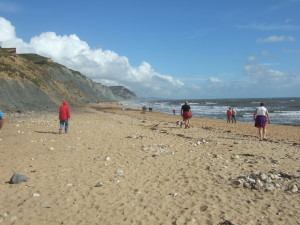
A blustery afternoon at Charmouth.
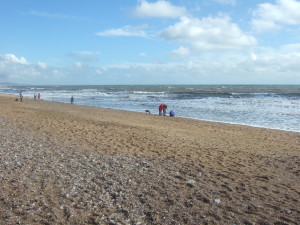
No-one in the water, unsuprisingly.
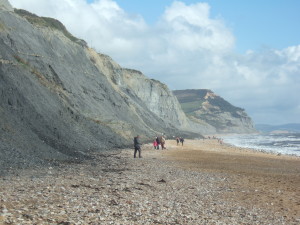
The well-named Golden Cap on the right.
